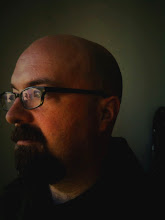Monday, March 22, 2010
Skalpel, Sculpture
Jazz, if you talk to the high-level musicians and critics, is mired in a debate between the Traditionalists and the Avantgarde, or 'free jazz'. The third spoke of this triumvirate is commercial, or smooth jazz, but we're not even going to go there: that target is too easy.
This so-called debate is poorly framed, in my book; both sides are right, as usual. The traditionalists rightly celebrate the blues and gospel roots of jazz, which many modernists have disposed of; the avantgarde is interested in moving music forward, and rightly so, but the music often becomes difficult listening in the process.
Meanwhile, there's another growing category, which I won't attempt to name myself because it has been unfortunately dubbed "nu jazz." Us3 is I think the most well known pop culture reference for nu jazz, with their hit Cantaloop, which pretty much just sets Herbie Hancock's tune "Cantaloupe Island" to a hip-hop beat.
But since the 1990s, the djs/producers that create this music have gotten much more sophisticated than Us3, becoming true experimenters and visionaries. These musicians get lumped into electronica, but the sounds that they cut up and layer are resolutely acoustic, usually vinyl, and serve as a champion for musicians and sounds left to the dustbin of history.
I chose Skalpel for this blog post because they're so reverent to their source, while still avantguarde in their treatment. Marcin Cichy and Igor Pudło are Polish, and they take their samples exclusively from Polish jazz records from the 1960s and 70s. This tune has an almost Cypress Hill-like bass groove holding down the background, but it slides in and out of tune in a way that challenges the ear. And that weird rattle! I have no idea where that is coming from, and I love it. Meanwhile, it's still jazz- that cool feel is there that we associate with jazz, probably because of the drum sticks swinging on the cymbals, which you never really hear in other types of music.
There's also something I just love about how the cuts become rhythmic in and of themselves, the sharp intake of breath on the ins and outs of an audio sample.If we go back to song structure though, there is a limitation, of course; this tune is really just the same 4 bars repeated over and over again, with layers of sound added and subtracted.

No comments:
Post a Comment